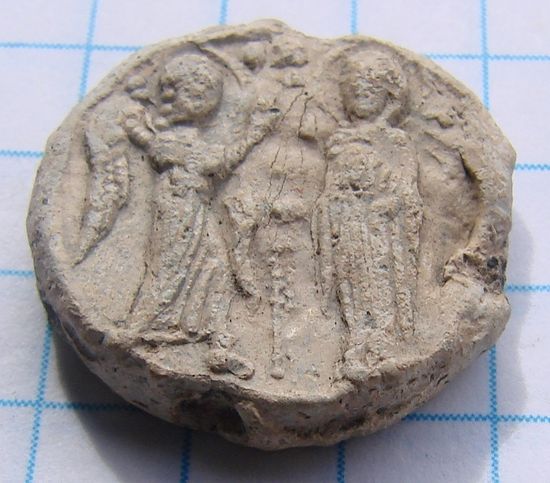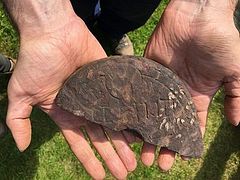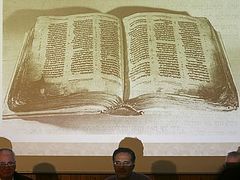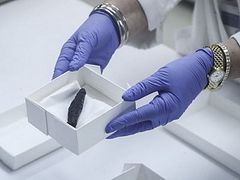Moscow, August 16, 2016

An old Russian prince’s seal has been discovered on the territory of Russia’s Kaliningrad region for the first time, reports Interfax with reference to the press service of the Institute of Archeology of the Russian Academy of Sciences (RAS).
This unique artifact was discovered by members of the Sambiyskiy expedition (named after the Sambia, or Samland Peninsula) of the Institute of Archeology during excavations at the Privolnoye settlement in the Kaliningrad region.
The seal was stamped on behalf of Prince Vsevolod Mstislavich who was a grandson of Prince Vladimir Monomakh of Kiev. The prince himself was the elder son of Grand Prince Mstislav Vladimirovich of Kiev and Grand Duchess Christina, daughter of the Swedish king Inge I the Elder. He lived from about 1095 till February 11, 1138.
The scene of the Annunciation is depicted on one side of the seal: Archangel Gabriel, the seal owner’s patron, bringing the Good News to the Virgin Mary. On the other side is a holy warrior – judging by an explanatory inscription in Cyrillic letters, the holy Greatmartyr Theodore (the patron of the prince’s father).
The lead seals which bear the prince’s name have confirmed the authenticity of a document written on parchment (from which they were suspended) – probably patent letters confirming land rights or a charter permitting free traveling on lands under the ruler’s jurisdiction.
Presumably, the charter was extremely important for the man who brought it from Russia (Rus’) to the Baltic shores. This seal is the only find of its kind discovered within the area of settlement of ancient Prussians on the south-east coast of the Baltic Sea.
The unfortified settlement of Privolnoye (originally “Gunthenen” in German) was found in 2016 by members of the Sambiyskiy expedition of the RAS Institute of Archeology. An occupation layer of up to fifty centimeters was found in the exploring shafts which contained fragments of moulded and circular ceramics, animal bones and amber.
Among other discovered artifacts are a great number of bronze bars, pieces of bronze and silver, and fragments of more ancient objects (for example, fibulae of the Roman period and the era of great migration of peoples) which were used as raw materials.
Among the factors which play an important role in the dating of the Privolnoye settlement are discovered coins, such as: half of a dirham (Baghdad; the year 190 of the Hegira - the Muslim era reckoned from Muhammad's departure from Mecca), a denarius of Otto and Adelheid (c. 990), an eleventh-century denarius of the city of Cologne, a fragment of a denarius of the city of Duisburg (1039-1056), a twenty-one-gram cut-off fragment of a silver grivna, and a lead sealing of the Drahichyn style. These finds are indicative of a high social and property status of the settlement’s inhabitants.



